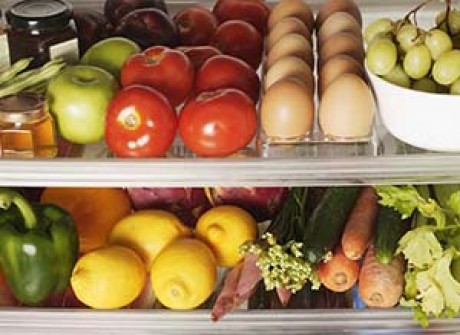How to handle food after a power outage
Using thermometers in your fridge and freezer is a good idea
By Carole HowellWe know that after extreme weather causes a power outage, our electric cooperatives are swifter than anyone in restoring our electricity. But we do experience some extended outages of two or three days or more. Unless you have a home generator sized to power your refrigerator and freezer, you face the unhappy prospect that your pricey food supply is now soggy and spoiled.
Sadly, after a long stretch without refrigeration, many of our valuable groceries should simply be introduced to the trashcan.
Salmonella, shigella, and e. coli are just a few of the dangerous bacteria that can grow in food. Some folks find out the hard way that you just can't salvage some foods after they've been without refrigeration. According to WebMD, pregnant women, young children, older adults and people with impaired immune systems are particularly at risk for severe symptoms.
The good news is that some foods can be saved.
According to Ben Chapman, assistant professor and food safety specialist with North Carolina State University, most food-borne pathogens can grow rapidly in food if it's kept in temperatures of more than 41 degrees F.
In general, your risk decreases if your power is off no more than two hours, especially if you don't open the refrigerator door. Chapman strongly advises using thermometers in both your refrigerator and freezer so you can be sure you know the exact temperature before and after the power outage. It's the only way to really know how warm your food has become.
"Most food-borne pathogens don't grow at freezer temps, so frozen food may be safely refrozen if the food still contains ice crystals or is at 41 degrees F. or below," says Chapman. "Check your thermometer and evaluate each item separately. Partial thawing and refreezing may reduce the quality of some food, but the food won't be any riskier if it remains below 41degrees."
As a safeguard, Chapman recommends stocking your freezer with plastic food containers and milk jugs filled with water to keep your temperatures colder longer. Remember that water expands when it freezes, so don't fill containers to the brim.
After a prolonged outage, the USDA Food Safety and Inspection Service recommends the following:
Discard
- Raw or leftover cooked meat, poultry, fish or seafood
- Soy meat substitutes
- Thawing meat or poultry
- Meat, tuna, shrimp, chicken or egg salad
- Gravy, stuffing, broth
- Lunchmeats, hot dogs, bacon, sausage, dried beef
- Pizza with any topping
- Canned hams labeled "keep refrigerated"
- Canned meats and fish, opened
- Soft cheeses: blue/bleu, Roquefort, Brie, Camembert, cottage, cream, Edam, Monterey Jack, ricotta, mozzarella, Muenster, Neufchatel, queso blanco, queso fresco
- Shredded cheeses
- Low fat cheeses
- Milk, cream, sour cream, buttermilk, evaporated milk, yogurt, eggnog, soymilk
- Baby formula, opened
- Fresh eggs, hard-cooked in shell, egg dishes, egg products
- Custards and puddings
- Casseroles, soups, stews
- Fresh fruits, cut-up
- Opened mayonnaise, tartar sauce, horseradish (if held over 50 degrees F. for more than eight hours)
- Fish sauces (oyster sauce)
- Opened creamy-based dressings
- Spaghetti sauce, opened jar
- Refrigerator biscuits, rolls, cookie dough
- Cooked pasta, rice, potatoes
- Pasta salads
- Fresh pasta with mayonnaise or vinaigrette
- Cheesecake
- Pastries, cream-filled
- Pies: custard, cheese-filled, chiffon, quiche
- Greens, pre-cut, pre-washed, packaged
- Vegetables, cooked
- Vegetable juice, opened
- Baked potatoes
- Commercial garlic in oil
- Potato salad
Safe
- Cheddar, Colby, Swiss, Parmesan, Provolone, Romano
- Processed cheeses
- Grated Parmesan, Romano, or combination (in can or jar)
- Butter and margarine
- Fruits
- Fruit juices, opened
- Canned fruits, opened
- Fresh whole fruits, coconut, raisins, dried fruits,
- Candied fruits, dates
- Peanut butter
- Jelly, relish, taco sauce, mustard, catsup, olives, pickles
- Worcestershire, soy, barbecue, Hoisin sauces
- Opened vinegar-based dressings
- Bread, rolls, cakes, muffins, quick breads, tortillas
- Breakfast foods such as waffles, pancakes, bagels
- Pies, fruit
- Fresh mushrooms, herbs, spices
- Vegetables, raw, whole
The North Carolina Cooperative Extension Service has a helpful website with food safety information and other advice for preparing for natural disasters. You can even download a workbook for gathering your emergency information and contacts. Visit their website at www.ces.ncsu.edu/disaster.
-
Share this story:
{ampz:Custom share for module}
